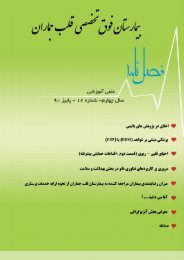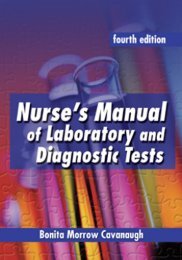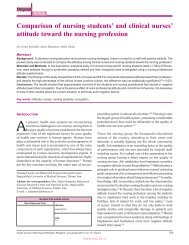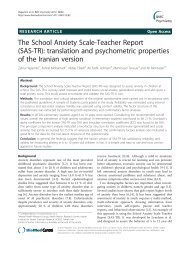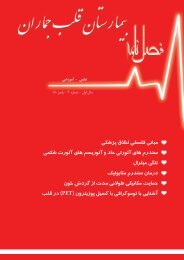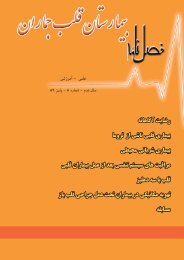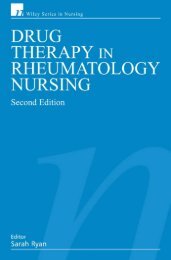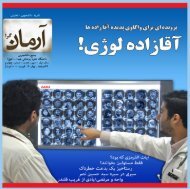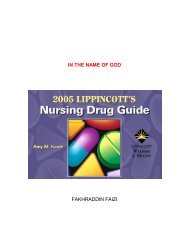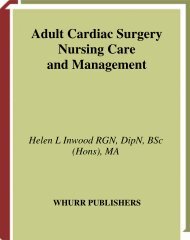Gastrointestinal Nursing.pdf
Gastrointestinal Nursing.pdf
Gastrointestinal Nursing.pdf
You also want an ePaper? Increase the reach of your titles
YUMPU automatically turns print PDFs into web optimized ePapers that Google loves.
16 Chapter 2the remainder of the digestive tract (oesophagus and rectum) escapes thehepatic filter and drains directly into the venous system.PHYSIOLOGY OF THE DIGESTIVE SYSTEMThe unique physiological processes that take place in the digestive system aredigestion, absorption, secretion, motility and excretion.Digestion is the process whereby large food molecules are broken down tosmaller ones. Food is ingested as large pieces of matter containing substancessuch as protein and starch which are unable to cross the cell membranes ofthe gut epithelium. Before these complex molecules can be utilised they aredegraded to smaller molecules, such as glucose and amino acids, which can beabsorbed from the gastrointestinal system into the bloodstream.The mixture of ingested material and secretions in the gastrointestinal tractcontains water, minerals and vitamins as well as fats, carbohydrates and proteins.The products of digestion, other small dissolved molecules, ions andwater are transported across the epithelial cell membranes, mainly in the smallintestine. This is the process of absorption. The transported molecules enterthe blood or lymph for circulation to the tissues. This process is central to thedigestive system, and the other physiological processes of the gastrointestinaltract, such as elimination, subserve it.Food which is ingested travels along the gastrointestinal tract to theappropriate sites for mixing, digestion and absorption to occur. Most of thegastrointestinal tract is lined by two layers of smooth muscle; contraction ofthis muscle mixes the contents of the lumen and moves them through thetract. Motility in the digestive system is under neural and hormonal control.Exocrine glands secrete enzymes, ions, water, mucins and other substancesinto the digestive tract. The glands are situated within the gastrointestinaltract, in the walls of the stomach, small intestine and large intestine, or outsideit in the case of salivary glands, pancreas and liver. Secretion in all regions ofthe gastrointestinal tract is controlled by nerves and hormones.Peptides of the gastrointestinal tractSome of the functions of the gastrointestinal tract are regulated by peptides,derivatives of amino acids and a variety of mediators released from nerves.These functions include contraction and relaxation of the smooth muscle walland the sphincters (physiological ‘gatekeepers’ of the gastrointestinal tract);secretion of enzymes for digestion; secretion of fluids and electrolytes; andgrowth of the tissues of the gastrointestinal tract.All gastrointestinal hormones are peptides, i.e. small molecules comprisingup to 50 amino acids. It is important, however, to realise that not all peptidesfound in the digestive tract are hormones. The gastrointestinal peptides can be




